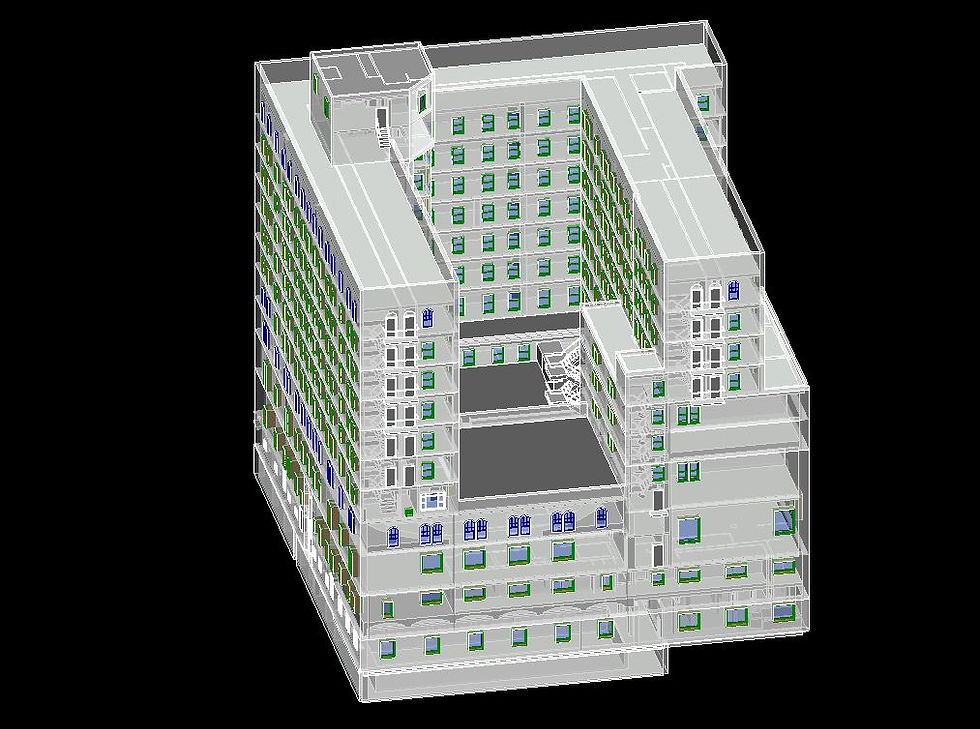One Bed, One Bath, 70,000 sq. ft.
- Vaughn Mantor

- May 15, 2020
- 3 min read
February 11, 2020 | Vaughn J. Mantor.
That’s the short description on Zillow, the real estate market web site, for the building in St. Louis, Missouri shown in the images below.
The text on Zillow fails to mention the damage done by vandals to this historic buildng or the herculean piles of pigeon guano and pigeon carcasses that despoiled several floors. And the Zillow listing misses the square footage by more than 100,000 sq. ft. Nevertheless, the abandoned building has been sold, and will be renovated and converted to a hotel.
Circa 1926 Circa 2017
The building was advanced for its time, but architecture, building codes, and much else have changed a lot in the intervening 93 years. And most documents, including measured drawings, have long since turned to dust. No one can guess at the unpleasant surprises awaiting the demolition team and the architects and the constructors who will work on this building.
The historic nature of the building requires special attention to its appearance, inside and out, so any demolition plan must be carefully reviewed beforehand. The architects for this remodeling project decided to use a Revit model for demolition planning, and the most efficient and accurate method for building the model is to start with laser scanning.

The CAD model will live long after the demolition. Post demolition, model will be updated to reflect current conditions. Then it will serve as the model for all architectural and engineering design work, and from there, the model will be used by the constructors for all their work. If the owners desire, it can then be used for maintenance work, too. A scanning-derived CAD model, accurate and appropriately used, will pay for itself many times over.
Images of the CAD model in Revit below.



Verify 3D spent several days scanning the building, inside and out. Along the way, we encountered a few obstacles. A flock of pigeons took advantage of the broken windows on several higher floors to make their homes. They left droppings almost a foot thick in places. Something also attacked the pigeons, and their carcasses littered the horizontal surfaces. Vandals and looters did more than deface and damage the building; they left rubbish and sewage.
Garbage, grime, and malodors notwithstanding, Verify 3D completed the scanning in four days. As is true for all laser scanning projects, the better the scanning data, the faster and better the CAD model comes together. This is not to say a greater density of scan points is required. The quality of the scan is dependent on a number of factors. We will expand on these factors in a later newsletter. Verify 3D delivered the CAD model, on schedule, twenty-four days after scanning was complete.
If you’d like a personal explanation or demonstration of the ways laser scanning can help you or you'd like to speak to one of our clients, our contact information is directly below.
Because our experience in this technology dates back to 2002, Verify 3D knows the most appropriate equipment to use on each project and how to use it for the best benefit to our clients. For this project we used two Leica laser scanners, a P-20 and a P-30, and Leica Cyclone software for registration. Per contract, Verify 3D delivered both a point cloud, in Autodesk Recap format, and a CAD model in Revit. Most of the delivered model was created at Level of Development (LOD) 200.







Comments